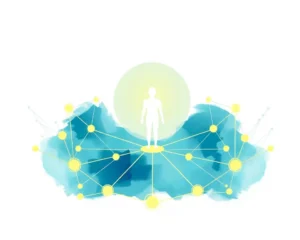In a move aimed at bolstering the well-being of young people, local councils across the nation are advocating for the integration of mental health awareness into the senior high school curriculum. This initiative reflects a growing recognition of the critical role that mental health plays in the overall development and success of adolescents. With an increasing number of young adults facing mental health challenges, educators and policymakers are seeking proactive ways to equip students with the knowledge and skills necessary to navigate these issues.
Addressing a Critical Need: The Importance of Mental Health Education
The push for mental health education in schools comes at a time when rates of anxiety, depression, and other mental health conditions are rising among teenagers. Factors such as academic pressure, social media influence, and broader societal challenges contribute to the increasing prevalence of these issues.
- Early Intervention: By introducing mental health topics in the classroom, schools can facilitate early intervention and prevention efforts. Students can learn to recognize the signs and symptoms of mental health problems in themselves and their peers, promoting timely access to support and resources.
- Reducing Stigma: Openly discussing mental health in an educational setting can help to reduce the stigma associated with mental illness. Normalizing conversations about mental well-being can encourage students to seek help without fear of judgment or discrimination.
- Building Resilience: A comprehensive mental health curriculum can empower students with coping mechanisms and resilience-building strategies. Learning to manage stress, regulate emotions, and cultivate positive relationships can contribute to long-term mental well-being.
Curriculum Proposals: What Could Mental Health Education Look Like?
While the specific content and structure of a mental health curriculum may vary depending on local needs and resources, several key themes are likely to be included:
Understanding Mental Health and Illness
- Defining Mental Health: Exploring the concept of mental health as a state of overall well-being, encompassing emotional, psychological, and social aspects.
- Common Mental Disorders: Providing an overview of common mental disorders such as anxiety, depression, ADHD, and eating disorders, including their symptoms, causes, and treatment options.
- Stigma and Discrimination: Examining the impact of stigma and discrimination on individuals with mental health conditions, and promoting understanding and empathy.
Promoting Mental Well-being
- Self-Care Strategies: Teaching students practical self-care techniques such as mindfulness, exercise, healthy eating, and adequate sleep.
- Stress Management: Equipping students with strategies for managing stress, including time management, relaxation techniques, and problem-solving skills.
- Emotional Regulation: Helping students develop the ability to identify and regulate their emotions in healthy ways.
- Positive Relationships: Fostering the development of positive relationships and social support networks.
Seeking Help and Support
- Identifying Resources: Providing information about available mental health resources, including school counselors, therapists, support groups, and crisis hotlines.
- Knowing When and How to Seek Help: Encouraging students to seek help when they are struggling, and teaching them how to access support for themselves and their friends.
- Advocacy and Awareness: Empowering students to become advocates for mental health awareness in their schools and communities.
Overcoming Challenges and Ensuring Effective Implementation
While the integration of mental health education into the curriculum holds great promise, several challenges must be addressed to ensure effective implementation.
Teacher Training and Support
- Adequate Training: Teachers need adequate training and support to deliver mental health education effectively. This includes providing them with the knowledge, skills, and resources necessary to address sensitive topics and respond to students in distress.
- Reducing Stigma Among Educators: Addressing potential stigma and misconceptions about mental health among educators themselves is crucial. Creating a supportive and understanding environment for teachers can help them feel more comfortable and confident in teaching these topics.
- Collaboration with Mental Health Professionals: Encouraging collaboration between teachers and mental health professionals can provide valuable expertise and support. This may involve bringing in counselors or therapists to co-teach lessons, provide consultations, or offer professional development to teachers.
Age-Appropriateness and Cultural Sensitivity
- Tailoring Content to Developmental Stages: The content and delivery of mental health education should be tailored to the developmental stages of students. Information should be presented in an age-appropriate and engaging manner, avoiding overly complex or triggering material.
- Addressing Cultural Differences: Recognizing and addressing cultural differences in attitudes toward mental health is essential. Curricula should be culturally sensitive and inclusive, reflecting the diversity of the student population.
- Parental Involvement and Communication: Engaging parents and families in the process is crucial. Schools should communicate with parents about the curriculum and provide them with resources to support their children’s mental health.
Measuring Impact and Ensuring Accountability
- Evaluating Program Effectiveness: Implementing mechanisms for evaluating the effectiveness of mental health education programs is important. This may involve collecting data on student knowledge, attitudes, and behaviors related to mental health.
- Continuous Improvement: Using evaluation data to continuously improve the curriculum and implementation strategies is essential. This ensures that the program remains relevant, effective, and responsive to the changing needs of students.
- Accountability Measures: Establishing accountability measures for schools and districts to ensure that mental health education is being implemented effectively. This may involve setting standards, providing funding, and monitoring progress.
Community Support and Collaboration
The success of mental health awareness initiatives in schools relies heavily on community support and collaboration.
Partnerships with Mental Health Organizations
Partnering with local mental health organizations can provide schools with access to valuable expertise, resources, and support. These organizations can offer training for teachers, provide counseling services for students, and help to raise awareness about mental health in the community.
Engaging Families and Caregivers
Engaging families and caregivers is crucial for creating a supportive environment for students’ mental health. Schools can offer workshops and resources for parents on topics such as understanding mental health, communicating with their children about difficult emotions, and accessing support services.
Raising Community Awareness
Raising community awareness about mental health can help to reduce stigma and promote a culture of support. Schools can participate in community events, host awareness campaigns, and partner with local media to disseminate information about mental health resources and services.
The Road Ahead: A Future Where Mental Health is Prioritized
The movement to integrate mental health awareness into the senior high school curriculum represents a significant step forward in prioritizing the well-being of young people. By equipping students with the knowledge, skills, and resources they need to navigate mental health challenges, schools can play a vital role in fostering a healthier and more resilient generation. While challenges remain, the growing momentum behind this initiative suggests a promising future where mental health is valued, understood, and supported in every school and community.










